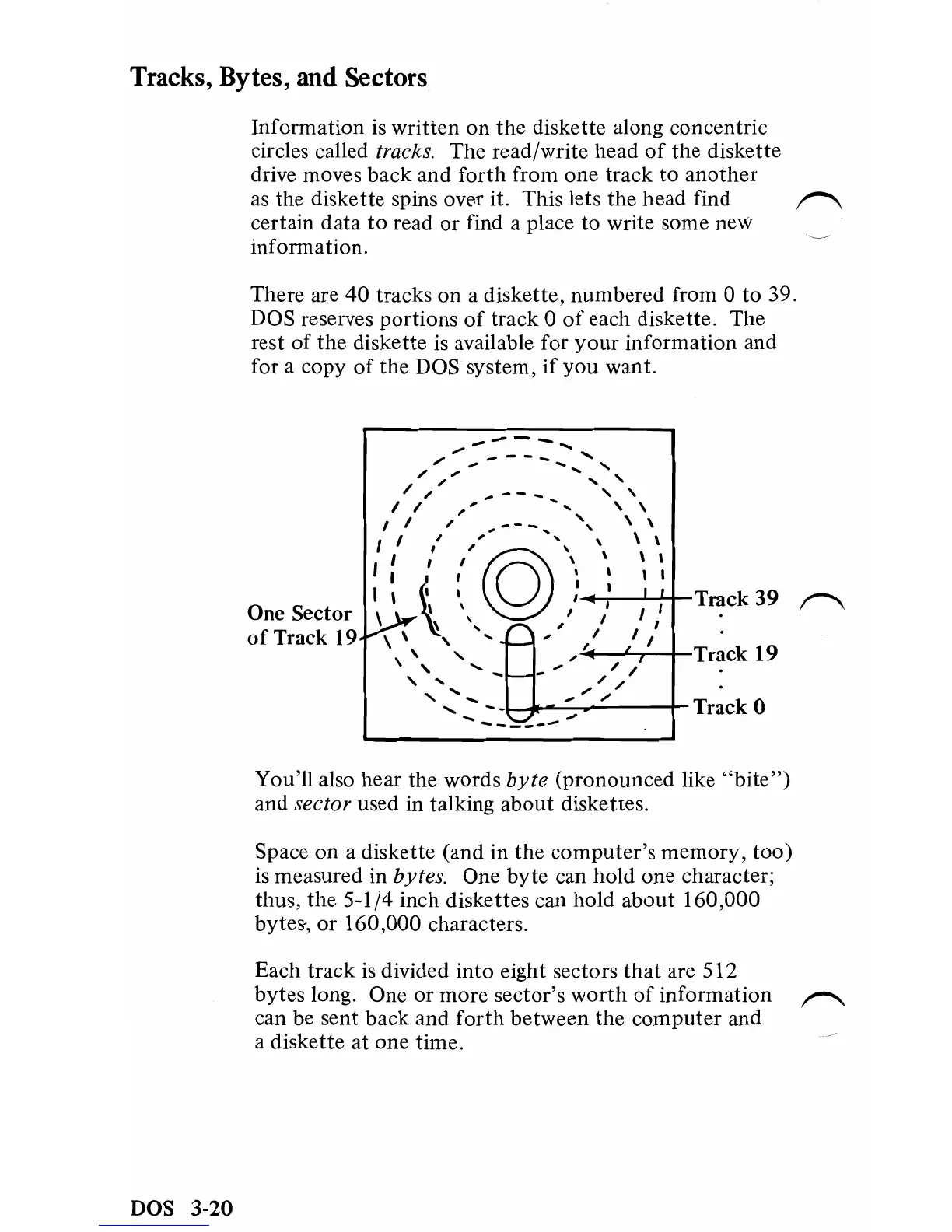Tracks, Bytes, and Sectors
Information
is
written on the diskette along concentric
circles called
tracks. The read/write head
of
the
diskette
drive moves back and forth from one track
to
another
as
the diskette spins over it. This lets
the
head find
r'\
certain
data
to
read
or
find a place
to
write some new
information.
There are
40
tracks on a diskette, numbered from 0
to
39.
DOS reserves portions
of
track 0
of
each diskette. The
rest
of
the
diskette
is
available for
your
information and
for a copy
of
the DOS system,
if
you
want.
."
--
-
.....
.....
/
...
----
...
...
"
"
"
"
"
,---
....
"
"
,
I
I
"'
"-
"
,
\
I
/
I
/
'
....
---....
"
,
\
\
,
,
,
I
\
\
\
I
\
\
,
" I I ,
, '(9)
)
,
,
,
I I
I:
\:
0
,
I
Track 39
1""'"""'\
One Sector
~
\ ' ,
I
I
\
:\',
~
,
,
I
I
I
of
Track 19
\ \ ,
....
'--
,
,
I I
,
"-
....
Track
19
\",
.....
...
/ I
,
"
....
--~
//
...
....
""
"-
.....
--
Track 0
.....
-_Y-_-"'"
You'll also hear the words
byte
(pronounced like
"bite")
and sector used in talking about diskettes.
Space on a diskette (and in
the
computer's
memory, too)
is measured in
bytes. One
byte
can hold one character;
thus, the 5-1/4 inch diskettes can hold about 160,000
bytes-,
or
160,000 characters.
Each
track
is
divided
into
eight sectors
that
are 512
bytes
long. One or
more
sector's
worth
of
information
~
can be sent back and
forth
between the computer and
a diskette at one time.
DOS 3-20
